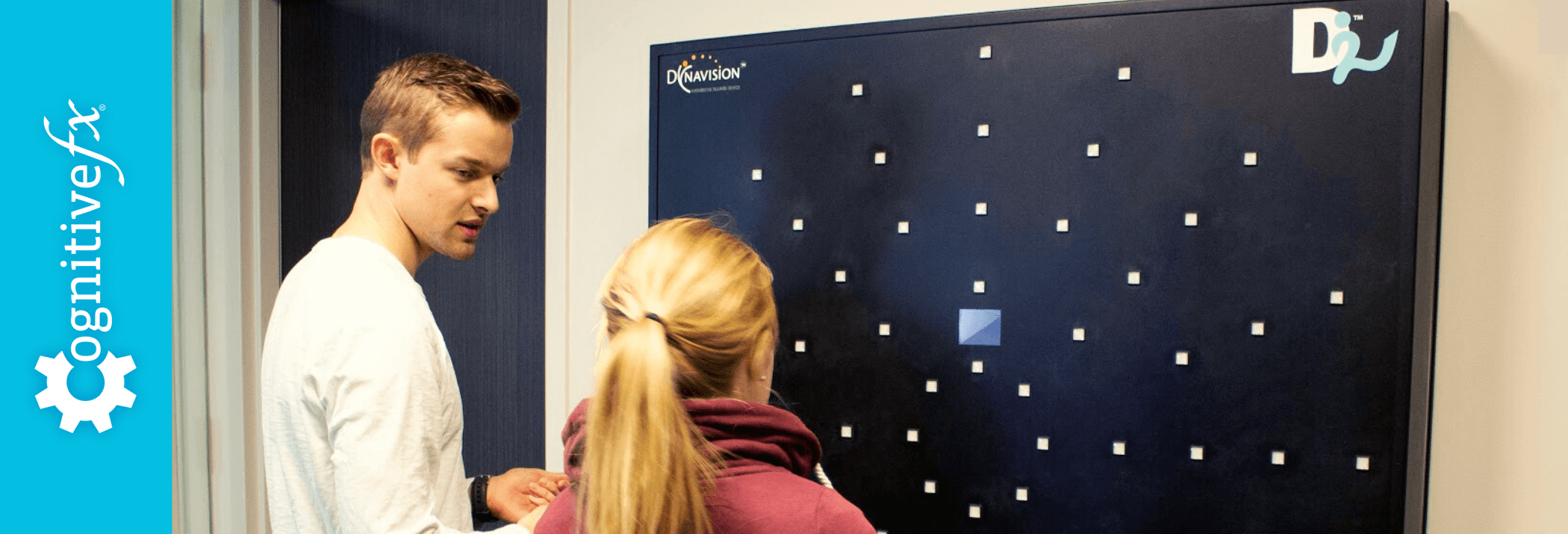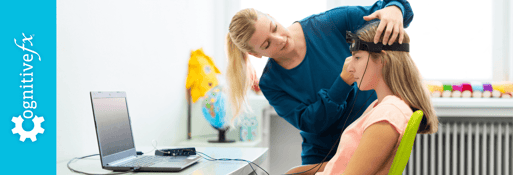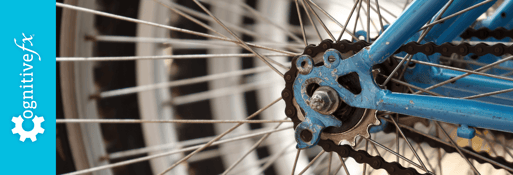If you speak to him today, you’d never be able to guess that Nathan “Nate” Benson is a brain injury survivor. The Bountiful, Utah native is in his final year of undergraduate school for a Neuroscience degree at Brigham Young University (BYU).
This semester’s coursework includes Neuroanatomy, Cell Biology, and the major’s capstone course, Advanced Neuroscience — not exactly what you’d expect from a guy who had significant struggles with memory and language just a few years prior.
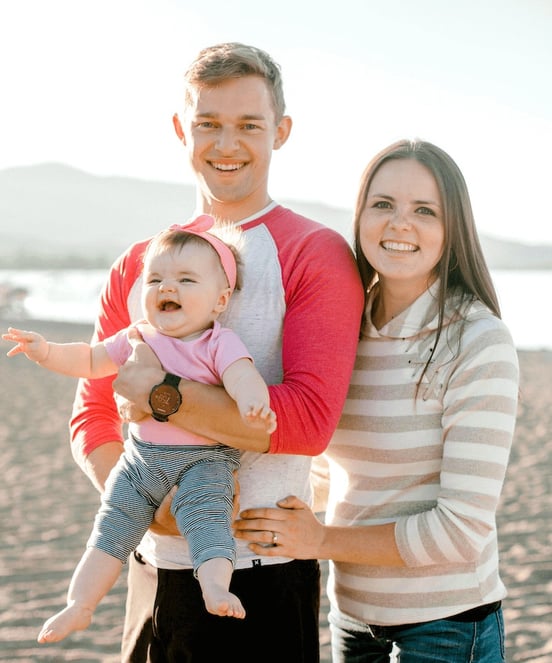
Nate Benson with his wife and daughter.
Of course, Nate’s story is far from typical. A quick glance at his life now — happily married, devoted father of a sweet baby girl, aspiring bioengineer — wouldn’t begin to show the difficult road he walked to recovery.
In our conversation, he shared:
- How childhood carbon monoxide (CO) poisoning damaged his brain
- The symptoms he experienced and how he found treatment
- What he learned during his part-time position as a Dynavision specialist
- His advice for brain injury patients still working through recovery.
If you’re experiencing symptoms that won’t resolve after a traumatic brain injury, you’re not alone, and you’re not crazy. 95% of our patients experience statistically verified brain function restoration after treatment at our clinic. To see if you are eligible for treatment, schedule a consultation.
Note: Any data relating to brain function mentioned in this post is from our first generation fNCI scans. Gen 1 scans compared activation in various regions of the brain with a control database of healthy brains. Our clinic is now rolling out second-generation fNCI which looks both at the activation of individual brain regions and at the connections between brain regions. Results are interpreted and reported differently for Gen 2 than for Gen 1; reports will not look the same if you come into the clinic for treatment.
An Atypical Brain Injury: Childhood Carbon Monoxide Poisoning
According to the CDC, roughly 400 people in the United States die from accidental carbon monoxide exposure per year. In the early 2000’s, Nate nearly became one of those deaths. He was just 7 years old at the time.
At first, the signs of carbon monoxide in his family home were so small that everyone but his mother, a nurse, missed them. When she followed up on her hunch by having their home evaluated for noxious gases, she was told there was no cause for concern.
But just three days later, the whole family awoke in the middle of the afternoon to a phone call. They weren’t typically late sleepers; the CO poisoning had prevented them from waking up at their normal time.
That was an alarming enough discovery to get a second opinion on the carbon monoxide levels in their home. As it turned out, a leak from their furnace exposed them to low levels of CO over three years. And within three days, those levels would have grown high enough to kill them in their sleep.
Nate and his family were just grateful to have survived. But they didn’t emerge from the experience unscathed: Prolonged carbon monoxide exposure can cause lingering brain damage, and the Benson family was affected.
At first, the symptoms weren’t that obvious. Nate and his siblings were more irritable and tired than they used to be, but that wasn’t concrete enough for a doctor to work with. Nate’s mom would joke, “You used to be geniuses, but now you’re just smart.”
But by the time Nate was a senior in high school, the long term symptoms of carbon monoxide poisoning started showing themselves.
“I was taking three AP classes and doing track competitively, so I was working out 2-3 hours per day sometimes. I was so exhausted that I got physically sick from all the mental exertion. But at the time, I didn't know what it was. I just thought it was because I was pushing myself too hard, which was true, but my brain got tired way more easily than a healthy brain,” he said.
His struggles with exhaustion continued through a two-year, post-high school mission trip to Arizona and throughout the first two years of college. During college, he experienced cyclic symptoms. He’d go to school, push himself too hard, scrape through the semester, then crash as soon as break started.
Some of his most obvious symptoms were:
- Brain fog
- Difficulty remembering the material he studied (he’d have to read the same page six or seven times)
- Headaches (from all the frustrated attempts to study)
- Anxiety and depression.
It seemed like each symptom fueled another symptom. Those frustrations, combined with not understanding what was happening or whether he could fix it, took a toll on his mental health.
“As I was in school longer, I started getting emotional breakdowns during which I would not be able to do anything. I would just curl up in a ball or sit on the couch and stare at a wall while my head was spinning and my mind buzzed from trying to work too hard,” he shared.
It wasn’t an easy time.
How Nate’s Family Found Cognitive FX
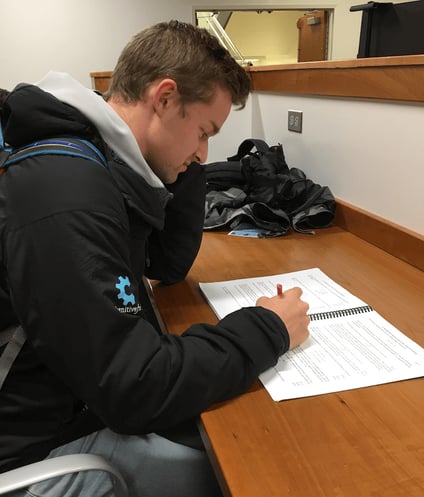
Over the years, Nate’s mom had her own share of health struggles as a result of the poisoning. Rather than send her kids to doctor after doctor, she tried out medical professionals on herself. But despite her best efforts, she couldn’t find someone able to help, so she didn’t involve her kids.
But in 2015, her neighbor’s daughter was in a serious accident. The girl fell 15 feet down onto a concrete floor, resulting in severe traumatic brain injury. After her initial healing process and treatment (which took some time), she went to Cognitive FX. “The fall should have killed her, and it had all these side effects, but if you met her today, you’d have no idea,” Nate said.
Her neighbor’s testimony was enough for Nate to go in for a brain scan in 2017. From the beginning, the doctors at Cognitive FX warned him they might not be able to help. After all, they’d never attempted to treat someone with carbon monoxide poisoning.
To understand what happened next, it helps to know that Cognitive FX offers a scan that no one else does at the moment. Regular MRI scans only show the structural integrity of the brain. It’s highly unlikely that they will detect concussion damage or similar conditions. But a functional MRI scan (in particular, an fNCI) can show how well each region of the brain is using its resources during problem-solving, memory tasks, and so forth.
Post-concussion patients show characteristic hypoactivity or hyperactivity in the brain regions affected by injury. That data can be used to tailor therapy regimens to each patient’s unique needs. But if the scan comes back normal, there’s not much the team can do to help.
When the doctors at Cognitive FX read Nate’s scan, they saw a striking similarity between his brain function and that of someone suffering from post-concussion syndrome. In other words, the effects of CO exposure on his brain looked the same as those of a concussion. Because of that, they agreed to treat him.
Nate’s Experience with Treatment
Nate’s therapy started on a Monday and ended on a Friday. His therapists took him through all kinds of exercises that forced him to use physical and cognitive abilities simultaneously. Even though it was a rigorous schedule, Nate didn’t feel overwhelmed at first.
By Thursday, he started feeling a little off. He was tired, his vision felt “funky,” and his thinking clouded a bit. At the same time though, he felt essentially okay. And that was already better than he felt at the end of each semester, even though the therapy challenged him in ways he wasn’t used to.
By the end of treatment, he noticed some small wins. “When I left the clinic, I was happy! I felt motivated. A lot of that was thanks to the therapists encouraging me. I did feel sharper. I felt way quicker. My reaction time and my ability to process things was faster,” he recalled.
For example, “My sister would be driving me home, and there'd be a yellow light at the intersection. My foot would jerk to brake about half a second before she would,” he laughed. “So my reaction time improved quite a bit.”
Those changes showed up on his end-of-week fNCI scan, too. In addition to reaction and processing time, he made huge leaps in verbal comprehension and memory/retention.
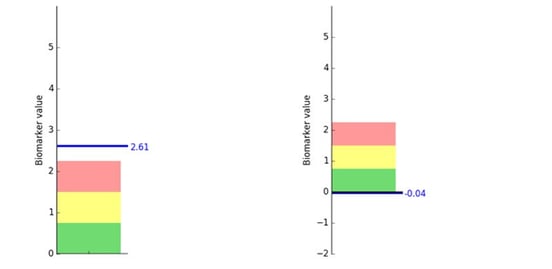 Nate’s initial score from the fNCI was above the red zone, indicating significant impairment. By the end of the week, his brain recovered so much that it looked like a scan from someone who had never experienced a brain injury.
Nate’s initial score from the fNCI was above the red zone, indicating significant impairment. By the end of the week, his brain recovered so much that it looked like a scan from someone who had never experienced a brain injury.
Overall, he went from a 2.61 to a -0.04, the kind of score you might see from someone who’s never had head trauma before.
Continuing Recovery at Home
After that first week, he continued to see gains over the next few months. His energy levels climbed, and his endurance improved significantly. A semester of college courses no longer depleted his reserves.
He took about a year to catch up in the language department, which makes sense since his linguistic struggles began in childhood. He had to learn things that people who had an injury in adulthood might not have struggled to regain. He also realized he had some lingering vision problems that require vision therapy. He plans to see Dr. Devin Duval, the optometrist Cognitive FX recommends for additional vision evaluation and care.
Nate’s emotions have also stabilized, but not without some extra work. Getting his other symptoms under control gave him the bandwidth to work on his mental health. He credits his supportive wife, who provided him with constant encouragement, and psychotherapy, which helped him retrain his thinking patterns to be healthier.
Inspiration for a New Career
Getting out of the symptom cycle also helped him re-evaluate what was most important to him. Before his treatment, he planned to go to medical school. But while what he learned in his classes was interesting, it didn’t motivate him. And when he visited the local hospital, he didn’t feel like it was the place for him. But his time at Cognitive FX opened his mind to other options.
After his recovery, he took a part-time job at Cognitive FX to become a Dynavision specialist. Dynavision is a large board with concentric rings of buttons which can light up in whatever pattern the therapist selects. It can be used to work on reaction time, working memory, and information processing — all common areas in need of improvement with brain injury patients.
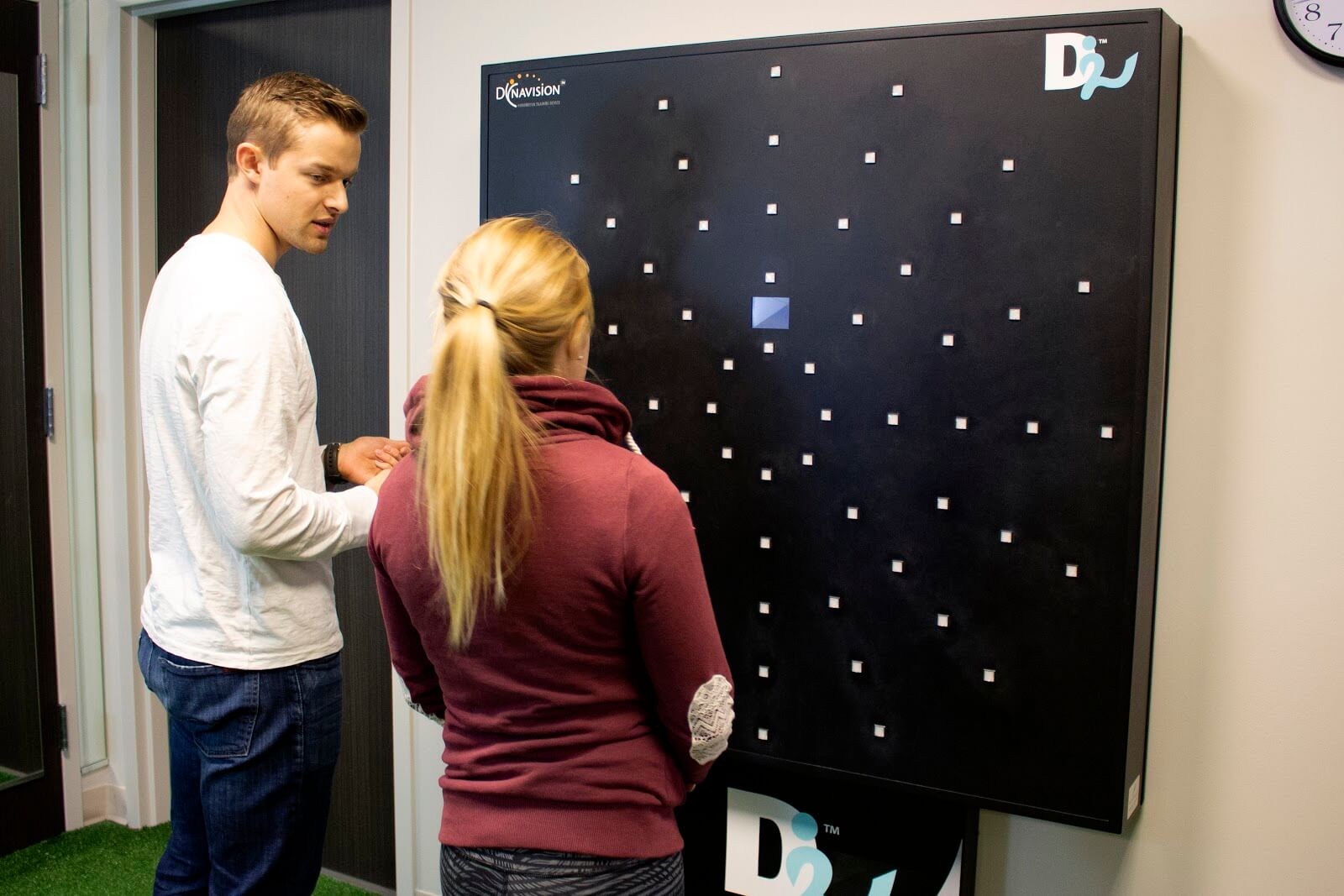 Nate (left) works with a patient at the Dynavision board.
Nate (left) works with a patient at the Dynavision board.
As a Dynavision specialist, he was able to accompany patients on one of the hardest parts of their therapy by sharing his own experience and encouraging them each step of the way.
His advice for patients struggling to complete their therapy is to remember that it’s not about successfully completing each task your therapist gives you. “It's about trying to do the activities. Failure helps make the change in your brain. There were many moments where people were just about ready to give up, and then I was able to say, ‘Hey, I'm a clear product of the therapy. It can help you. It does help you.’ And from that, a lot of people were able to keep pressing forward,” he shared.
He was also inspired by the progress some patients would make in just one week. “There were some people who, at the beginning of the week, could barely remember a list of five words,” he began, “but at the end of the week, they could not only memorize the list of five words, they could also alphabetize them and do a continuous adding activity while they hit the lights.”
A Family Affair
Since Nate’s treatment, his mom and one of his brothers have gone through the treatment program at Cognitive FX. Nate’s brother was in an even worse place than Nate was when he went in.
“My brother was the most unfortunate out of all of us,” Nate said, “because he had eight concussions. He was really unlucky.” Most of the time, it was something that could have happened to anyone, like slipping on the ice and hitting his head on the car. But there were other, more dramatic moments too.
“He was in theater, and they were doing a dance performance. He had to dive over somebody and do a somersault while the person rolled underneath him as he dove over. But that person didn't roll correctly, so my brother had to compensate. He landed straight on his head and got knocked out for a few seconds in the middle of the performance!”
There was also a time when a rogue 8-ball went flying off the pool table and hit him straight in the forehead.
His recovery was (not unexpectedly) rockier than Nate’s, but he’s now at BYU majoring in pre-Business. Both he and Nate’s mom are doing better than they were before going through treatment at Cognitive FX.
Nate hopes that, in time, his other siblings will be able to go through treatment, too. Now that he’s been able to overcome the symptoms that held him back, he’s enthusiastically tackling life the way he always wanted to.
Note: If you’re experiencing symptoms that won’t resolve after a traumatic brain injury, you’re not alone and you’re not crazy. 95% of our patients experience statistically verified brain function restoration after treatment at our clinic. To see if you are eligible for treatment, schedule a consultation.
